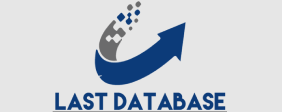Asana uses a different approach to produce case studies with a personal touch that fits its editorial line: instead of explaining how its customers use the product, they tell us how their own team uses the tool.
By sharing a large portion of their audience’s problems
your employees become both users and promoters with the credibility of an expert.
After all, who could explain to you better than them how to get the most out of Asana?
Unbounce also frequently publishes case studies on their blog. And that in itself tells us something, because they are specifically specialized in conversion optimization.
They’ve even found a cool way to merge these types of articles with one of the most popular blog formats: the listicle . More specifically, lists or collections of top examples.
We could say that these types of articles are like covert case studies , because content needs they manage to show the benefits of the product with real examples, but they overseas data do not focus on a single client. And most importantly: the focus is on inspiration.
Examples:
- In it together: Unity unites its newly remote workforce in Slack – Slack case study
- How Asana uses Asana for Remote Work – Asana case study
- 27 Ecommerce Landing Page Examples to Maximize Sales in 2020 – Unbounce Case Study
Spice up your buyer’s journey
Variety is the spice of life, and so is the buyer’s journey .
At different stages of the buying cycle. And that means you’ll need to experiment analyze your competition in the serp with formats and types of content that specifically target the unique needs of each stage.
By creating blog content that is more conversion-oriented, we naturally enter a more commercial territory focused on the solutions that your company offers.
But even in product articles or case studies
the protagonists should be your buyer personas —them, their interests, dreams, fears and doubts— and not your brand or your product.
If you want to create engaging, relevant content that fits with the editorial b2c phone list line of your B2B blog, don’t forget to approach it from the point of view of your audience and find an angle that connects with them, if possible on an emotional level.

